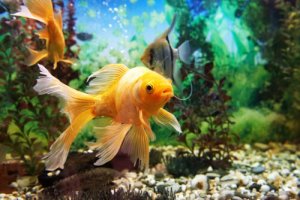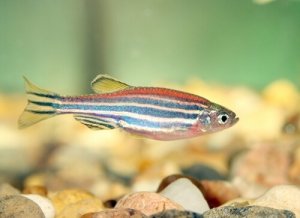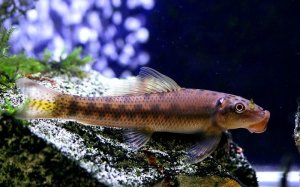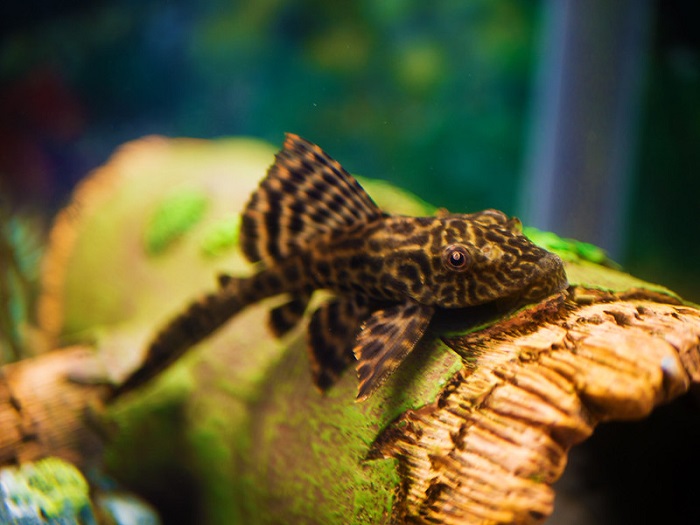
You may find your aquarium covered with some unsightly algae in all colors and variations. If you are someone who does not like the idea of too many chemicals, or snails that tend to breed excessively, your best option is an Algae eating fish.
Algae Eaters for your aquarium can not only be essential to keep algae and other detrimental elements under control, but they can similarly be aesthetically pleasing and quite entertaining, so let’s jump in and look at a few of the best algae eaters for your aquarium.
Criteria For Choosing
Now before we get into the list, we have chosen algae eaters under specific criteria to ensure that one species will be suitable for every taste and preference of the diverse aquarists out there.
- Most of our choices are based on beginner-friendly to intermediary fish that are easy to care for and hardy.
- Some of the species may be on the expensive side as most algae eaters are caught rather than bred in captivity.
- We have chosen mostly peaceful species, though some tend to be territorial towards their species.
- Also kept in mind is aesthetics as I am sure you want something that will stand out in your tank.
That said, here are a few of the top algae eaters, with some care basics on each species:
1. Zebra Pleco
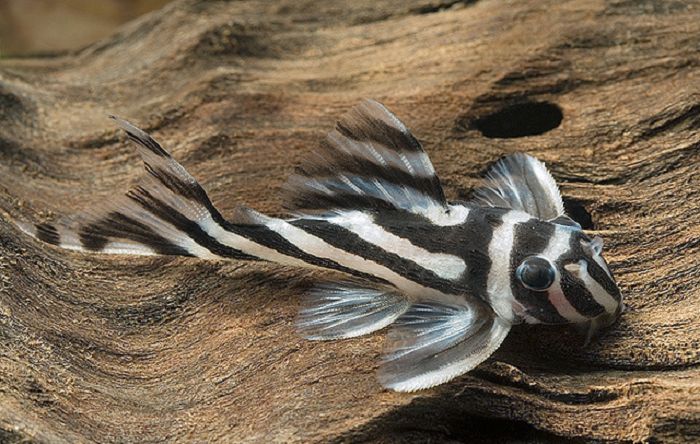
Species
As a species, the Zebra Pleco, “Hypancistrus zebra” gets its name because of the black and white stripes on its body. The Zebra Pleco mainly originates from Rio Xingu in Brazil, and a river bends downstream from Altamira Para. A small species of Catfish, the Zebra Pleco, is perfect for smaller aquariums. However, it should be said that this species is critically endangered in its natural habitat and the Brazilian Government has till further notice banned exports of the Zebra Pleco. Though you may still be able to obtain one, at an expensive cost from specialized breeders.
- Color Variations – The Zebra Pleco is a suckermouth catfish with an armored body, similar to other Pleco species, and a soft belly. It does however have a more renowned highly angled jaw, a trait found in only a few similar species. It is named after its colors of a white base with black stripes from the back of the head to the tail, and an E shape sideways on the nose. Other Hypancistrus species may be larger and can have spots of dark brown, black, or white, or even bands and patterns that are similar.
- Size and Lifespan – The Zebra Pleco is much smaller than most pleco species and when mature can reach sizes of between 6.4 centimeters (2.5 inches) and 7.6cm (3 inches). They have a surprisingly long lifespan of between 10 and 15 years, with optimal care.
- Temperament and Behavior – As with all Pleco Species the Zebra Pleco is territorial with its species, though friendly with other fish species. It is peaceful, and shy during the day, but quite active at night.
General Care
Zebra Plecos are quite easy to care for, though they enjoy clean fast moving water with strong currents and a more carnivorous diet. Their natural habitat has oxygenated water with plenty of rock crevices to hide in which we would ideally like to mimic.
- Tank Set-Up – The Zebra Pleco still requires a large enough tank of around 20 gallons, with a soft sandy substrate, or a fine gravel substrate. They do well in low light and are nocturnal. You will need a strong filter and heater to maintain proper water conditions. Zebra Plecos need a water pH of between 6.0 and 7.5 and high temperatures of between 79 and 86° F (26 and 30 ° C). They enjoy rocks and small caves or crevices that can also be created with clay pots. Minimal synthetic or Live plants are required, and you will need some Driftwood or Bogwood for them to feed on. Rooted Live plants are your best options such as Anubias, Cryptocoryne wendtii, Amazon Frogbit, Vallisneria, and Java Ferns.
- Compatible Tank Mates – Try to avoid other catfish species as tank mates. Zebra Plecos get along well with similar-sized species that can tolerate their water parameters and temperatures. You can look at introducing Cardinal Tetras, Denison Barbs, Platies, Cherry Shrimps, Phantom Tetras, and Harlequin Rasboras.
- Feeding – Through omnivorous Zebra Pleco prefers more meat-based foods and will feed mainly on algae, and algae wafers, protein-rich pellets or flakes, and live or freeze-dried bloodworms and, daphnia brine shrimp. Vegetables such as sliced cucumber, spinach, and courgettes can be given on occasion. Zebra Pleco does well on several smaller meals per day rather than one large meal.
Breeding
Contrary to most other Pleco species, breeding Zebra Plecos is quite simple under the right conditions. But first, we will need a male and female pleco and a separate breeding tank with plenty of caves and hiding spaces.
- Male and Female Differences – Mature males have longer intertubercular spines and wider heads than females. Males also have pointier and narrower Genital Papilla, while females have broad and narrow papillae.
- Breeding – In short You will need extra oxygen in your tank with an air stone, and the water heated to 82° F (32 ̊C). The female lays her eggs in a cave or crevice, and the male fertilizes them. The males care for the eggs and hatchlings, which use their yolk sack as nourishment until they are dependent on fry, in which case you can feed them powdered fry food.
2. Whiptail Catfish
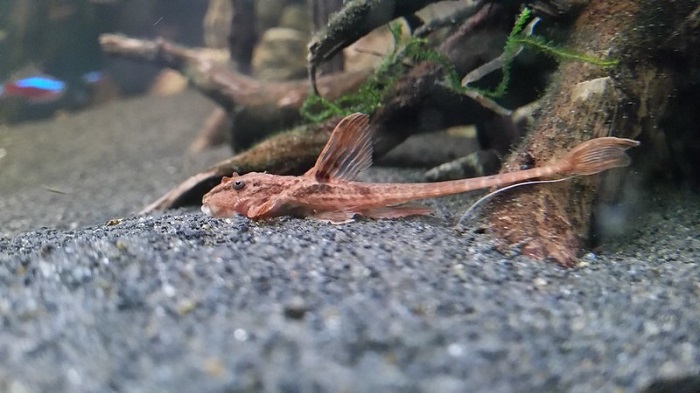
Species
The Whiptail Catfish “Daisy Loricaria filamentosa” is an armored catfish species with hard skin-like plates and a soft belly, that is found mainly in the rivers and basins of Columbia. Explained to be Bizarre in appearance, they are something different in an algae eater, and ideally, very hardy and peaceful fish compared to other algae eater species.
- Color Variations – The Whiptail Catfish has a grayish-to-brown color with an elongated tail that resembles a whip. The different colors and patterns of Whiptail species will usually depend on the areas that they are from, and the foods they get naturally. There are Red, Orange, Beige, and brown species, and different color patterns of stripes, spots, and blotches.
- Size and Lifespan – Most Whiptail Catfish species can grow up to 26 cm (10 inches) in size when mature, and they generally have a lifespan of around 5 to 8 years in captivity.
- Temperament and Behaviour – The Whiptail Catfish is one of the most docile catfish species, that will not even harm small fish fry. They may however feed on small insects and larvae. They are nocturnal, and very inactive bottom-dwelling fish.
General Care
The fact that it is such a peaceful and docile fish, that is hardy and adaptable to most water conditions, makes the Whiptail Catfish an aquarium favorite, for larger aquariums though.
- Tank Set–Up – A tank of at least 30 gallons, is suitable, and you can add a few other fish species. They prefer slightly acidic and soft, warm water, but can easily adapt to most water conditions. Water temperatures of 72° – 85° F (22° – 30° C) are ideal, and pH levels of 0 – 7.5. Contrary to most other algae-eating species, Whiptails can be kept in groups, and do enjoy some open space to swim. They will need a hiding spot from time to time, so you can add some rocks or caves, and Driftwood that also serves as nutrition. Whiptails like a soft sandy substrate and low-rooted plants placed scarcely here and there.
- Compatible Tank Mates – Small mid-level swimming, and peaceful fish are ideal, Whiptails get along with their species and even Kuhli Loaches. Danios, Tetras, Rasboras, and Pencilfish are great tank mates. Just be wary of fish that like to nip fins, as they may harass your slow-moving Whiptail.
- Feeding – Whiptail catfish are not the most eager algae eaters and are more carnivores than said to be omnivorous. They enjoy a balanced diet of Catfish based pellets and live or freeze-dried blood worms, daphnia, and Brine Shrimp. You can similarly feed them sliced courgettes, cucumber, or green leafy vegetables. They are bottom feeders that mostly feed off detritus and food that has sunk to the bottom. You can feed them small amounts once or twice a day, and feed meat sparingly.
Breeding
Whiptail Catfish are quite easy to breed under the right circumstances, though you will need a separate 50-gallon breeding tank with gravel substrate, plants, Driftwood, and bamboo or PVC tubes for them to lay eggs in.
- Male and Female Differences – The female has a pointy head and the male has a much rounder head with whiskers on the side of the head as a telltale sign. If you have a group of Whiptails they will easily form their pairs.
- Breeding – The female lays her eggs late afternoon, and the male fertilizes them. The female is removed and the male takes care of the eggs and young fry. The fry will feed on their yolk sac and after around three days can be fed baby brine shrimp. You can similarly place some lettuce at the bottom of the tank for the fry to feed on.
3. Chinese Algae Eater
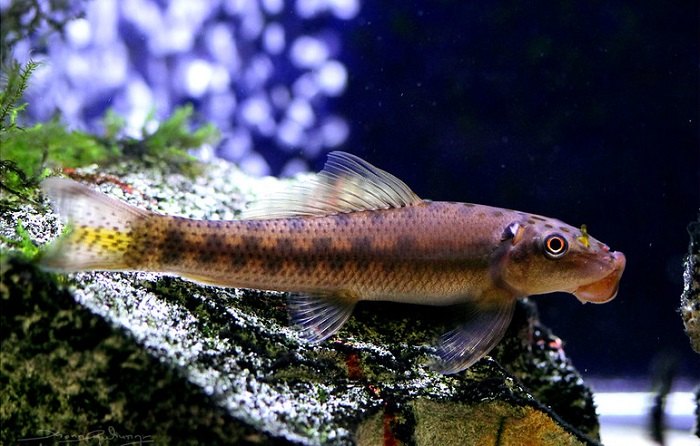
Species
The Chinese Algae Eater Gyrinocheilus is a single species in the Gyrinocheilidae family, which is a small cypriniform (fish with ray fins), found in the fresh fast flowing waters of the Southeast Asian mountains, it is called an algae eater because of the sucker-like mouth that holds on to fixed objects eating algae and detritus. A unique factor of the species is the gill slits with two openings on each side one for water to enter and one for it to exit allowing it to breathe without using its mouth.
- Color Variations – The Chinese Algae eater has a Golden color base with darker bands that run across the body and a series of dark spots in the lighter-colored underside. You can find a brighter-colored yellow morph that has fainter color bands mostly sold as a “Golden Sucking Loach”.
- Size and Lifespan – It is a relatively large-sized algae eater, or “loach” that reaches between 10.2-12.7cm (4-5″) and 11 inches (28cm) in length when mature. It also has a long lifespan between 5 and 10 years, depending on the quality of care it receives.
- Temperament and Behavior – The Chinese Algae eater is not known to have the best temperament, and as it grows quite large, it can wreak some havoc. It is known to be peaceful and placid, hiding mostly during the day, primarily a bottom dweller. Though around one year of age it becomes territorial, especially towards other bottom dwellers. There have also been cases where it will eat the slimy coat of larger fish species, and nip the fins of fish with long flowing fins that are slowly moving.
General Care
The Chinese Algae Eater has a complex temperament and does well in a species-specific tank because it is aggressive as it matures. It can thrive over wider spectrums of water temperatures and conditions and is fairly easy to keep with a proper understanding of the breed.
- Tank Set-Up – You will need a 20 – 30 gallon tank for a single Chinese Algae eater, and maybe larger, depending on other species companions you are going to keep. It is very adaptable to water parameters and will thrive in water with a pH of between 5.8 – 8.0, and temperatures between 64-86 °F (18-30 °C). A sandy or Fine gravel substrate is ideal, and tank décors such as caves, Rocks, and Driftwood for feeding and hiding spaces. Plants with deeper roots such as Anubias and Java ferns are more suitable, and they will eagerly eat dead plant materials. You will need a filter with a stronger current, a heater, and low light for this species.
- Compatible Tank Mates – Characids, such as most tetra species, Cyprinids, including Barbs, Rasboras, and Danios are suitable, except Goldfish, and African Cichlids. Avoid fish with long flowing fins, and that have a high back shape.
- Feeding – Young Chinese Algae Eaters feed mainly on Algae and eventually tend to get a taste for eating the slime coating and eyeballs of larger fish, and even eat entirely smaller fish. You can feed them sinking algae wafers, catfish wafers, and more meat-based foods such as Bloodworms, Daphnia, Moina, and Brine shrimp. Zucchini and Spinach leaves can be given as vegetation. Chinese Algae Eaters are Omnivores that mainly feed on Algae. They can be fed twice a day, or more to prevent them from grazing on larger tank companions.
Breeding
- Male and Female Differences – The males have more Barbels (Whisker Like Organs on the bottom of the mouth), than females, and females are usually plumper than males.
- Breeding – Chinese Algae eaters require hormone enhancers to breed, and will not breed in captivity. Some specialized farms have the right equipment and conditions for them to breed, though breeding at home is not possible.
4. Reticulated Hillstream Loach
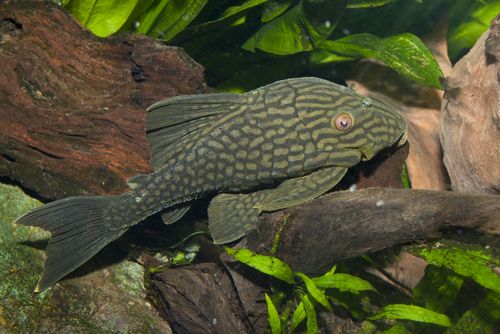
Species
One of the oddest algae eaters I have seen so far, though very intriguing to look at, is the Reticulated Hillstream Loach. Scientifically known as the “Sewellia lineolata”, it is a Hillstream Loach species that originate in Vietnam, in fast-flowing shallow waters that have high oxygen levels. It is similarly found in Riparian zones (stretches between land and water bodies) feeding off the biofilm-coated rocks and surfaces that were exposed to sunlight. Because of their very strong gripping abilities, they are ideal for cleaning large surfaces in an aquarium and make the perfect little “window” cleaners.
- Color Variations – The Reticulated Hillstream Loach is colorful and striking similar to a miniature stingray, with black stripes and Golden brown dots. There are over 202 species of Hillstream Loaches in general, mostly from Asia, the Butterfly Hillstream Loach is a species that is quite interesting in color, however a Chinese breed rather than from Vietnam.
- Size and Lifespan – The Reticulated Hillstream Loach can reach a maximum size of up to 3 inches (7.6cm), which is reasonably small, and they have a lifespan of between 8 and 10 years with proper care.
- Temperament and Behavior – They are said to be quite entertaining and comical to watch, with a peaceful nature mainly stuck to an object of choice, and some fun antics. Furthermore, they can be kept single, or in groups of three or more to avoid aggression, though they are not known to be overly aggressive or territorial.
General Care
Reticulated Hillstream Loaches are adaptable to most water conditions, and they love surfaces to scavenge on, so you will mostly find them sucking on the sides of your tank, on a rock, or some driftwood. They need a fast strong current, plenty of oxygen, and thrive in cooler temperatures.
- Tank Set-Up – A 20-gallon community tank with a few other species companions, a single loach, or a group of three is ideal. They thrive in water temperatures of 65-80°F (20-27°C), and prefer more stable pH levels between 7.0 and 7.5, with very clean and oxygenated water. I have found that they will be content with any tank setup, whereas a more rocky and minimal setup, or a lushly planted tank with sandy or fine gravel substrate.
- Compatible Tank Mates – With their friendly and peaceful nature you need only be careful of tank companions that may harm your loaches. Opt for smaller mid-level dwelling fish such as Rasboras, Tetras, Danios, and Livebearer species as they will not harm the fry. There are even cases where they are kept with ornamental goldfish.
- Feeding – The Hillstream Loach will feed on all types of algae and matter that it can find on the surfaces of your tank. You can complement their diet once or twice a day with Spirulina algae, blanched green vegetables, and brine shrimp as they are omnivores overall.
Breeding
Breeding these adorable guys is quite easy, and if comfortable and safe enough, they might even breed in your communal tank. All you need is some extra hiding spots, and food for the babies eventually, such as infusoria, microworms, and baby brine shrimp. Sexing is a little more complicated though.
- Male and Female Differences – The females possess a wider head and plump body, and the males have a more jagged shape. Juveniles are close to impossible to have sex with, so I suggest getting a small group should you wish to breed.
- Breeding – The female lays eggs in the substrate and the males fertilize them, the babies hatch within a few weeks, and the parents pose no danger to the eggs or fry.
5. Siamese Algae Eater
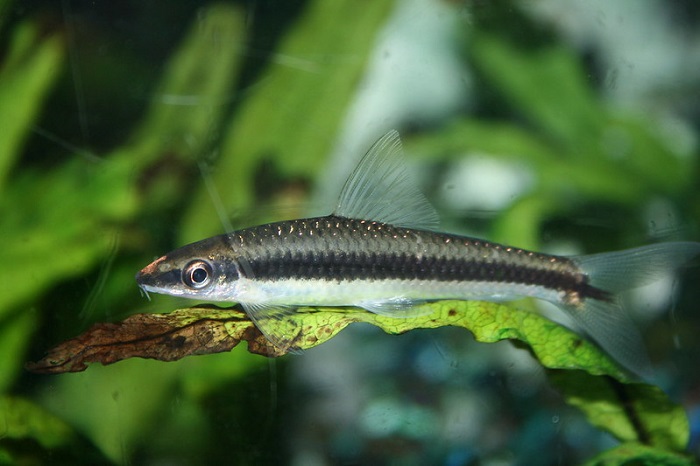
Species
The Siamese Algae eater (Crossocheilus oblongus), is a freshwater fish from the Carp family, found in Southeast Asia in natural streams and rivers, as well as flooded forests in the rainy season. It is a species easily confused with the Flying Fox species that lacks the black banded coloration and is closely related to the Red Algae eater many times sold as a “Siamese Algae Eater”. Ideally, it is much more peaceful than the Chinese Algae eater and the perfect communal tank species to help keep your tank clean, sometimes even referred to as a “little rubbish bin”, consuming all types of algae, even red algae, and other detritus.
- Color Variations – The Siamese Algae eat has a specific color not to be confused with similar species, it has a gold-brownish body, with a prominent, thick black stripe running horizontally from the nose to the tail, with a lighter belly, and translucent fins. Other color variations include silver, tan, or yellow base colors with a black stripe.
- Size and Lifespan – They are a mid-sized species with a maximum adult size of 15 cm (6 inches) and have a long lifespan of up to 10 years.
- Temperament and Behavior – Interestingly enough they are schooling fish, even though they are content alone, however peaceful as juveniles, they may establish and protect territory when older.
General Care
The Siamese Algae eater is a bottom dweller that requires rocks and driftwood to rest on, and they enjoy live plants and can thrive in heavily planted tanks, to keep red algae under control.
- Tank Set-Up – Because of their larger size a tank of 30 to 35 gallons is required, especially when keeping more than one algae eater. keep the water clear with a strong current filter, and slightly heated within a temperature range of 24–26 °C (75–79 °F). They are tolerant with pH levels between 6.5 to 8.0 and slightly hard water. Décor such as large rocks, large leaf plants, and driftwood, with plenty of hiding, and resting spaces is necessary, and you can keep them in heavily planted tanks, or with few plants.
- Compatible Tank Mates – Ideally Siamese Algae eaters c nabe kept along with other species, or in pairs and groups. They enjoy the company of Guppies, tetras, Danios, barbs, and docile Gourami species.
- Feeding – ideally, they are opportunistic feeders that will eat almost anything, thus omnivores. You can feed them algae flakes or wafers that will sink, insect larvae, and blanched green vegetables twice a day in small amounts.
Breeding
Unfortunately breeding Siamese Algae eaters is quite difficult and usually only done by professional breeders.
- Male and Female Differences – Sexing juvenile males and females can be almost impossible, and you can only tell the difference around 3-4 years of age, where the female will be much larger than the male.
- Breeding – Breeding is not advised, or possible, you will need large tanks of at least 100 gallons with optimal conditions that mimic their natural climate changes. They similarly need hormone injections, which are not readily available.
Final Thoughts

Hopefully, you have found a favorite in our list that will be suitable for your communal, or individual aquarium needs. Most of these species should be available from more exclusive or regular breeders and pet stores.


